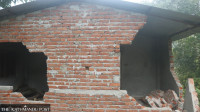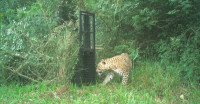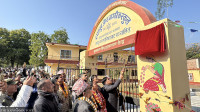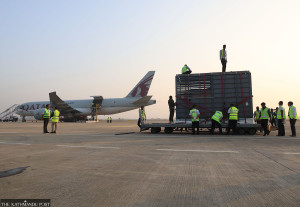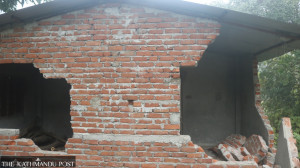Lumbini Province
In Buddha’s birthplace, disquiet is growing
Lumbini Development Trust staff padlock offices demanding better benefits and promotions. Monks decry recurring power outages.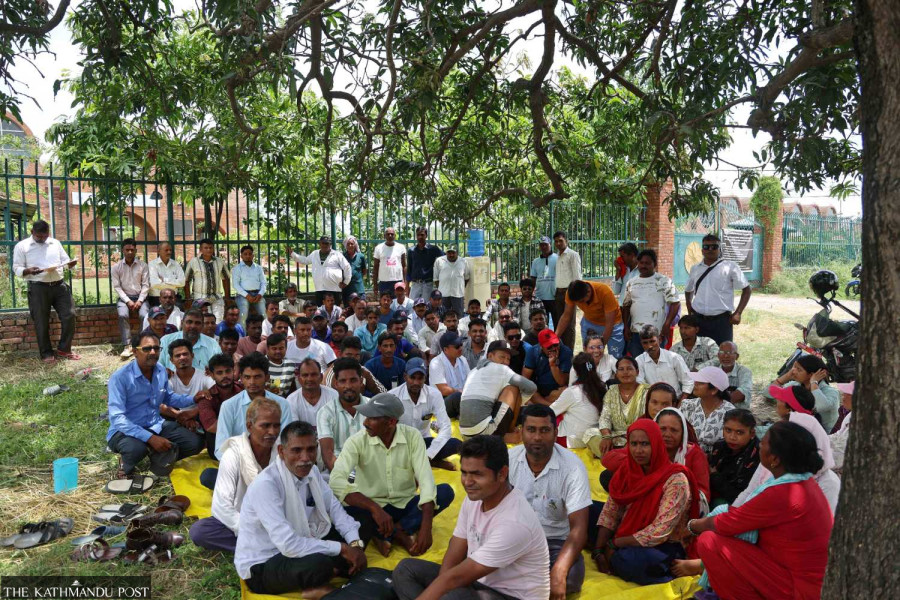
Manoj Paudel & Dipendra Baduwal
Lumbini, the birthplace of Gautam Buddha and a global symbol of peace and compassion, is now steeped in agitation and unrest.
Once a tranquil haven for pilgrims, tourists and devotees seeking spiritual solace, the atmosphere of Lumbini has turned tense as employees of the Lumbini Development Trust (LDT) and resident monks have submitted memorandums to authorities to address their long-standing grievances and administrative neglect.
Trust employees have been agitating over the past three days. They have padlocked the main gate of the LDT’s headquarters and various departments, staging sit-ins beneath the mango tree in front of the headquarters from 10 am to 5 pm daily. Administrative work has come to a halt due to the agitation.
The employee union is leading an indefinite protest with a four-point demand, including dearness and other allowances, amendment to the employee regulations to ensure permanent positions for staffers on long-term contracts and the implementation of promotions for permanent employees. Despite the growing unrest, key leaders of the LDT are absent in Lumbini, deepening staff frustrations.
Lharkyal Lama, vice-chairman of the LDT, who left for Kathmandu after Buddha Jayanti celebrations on May 12, is yet to return to Lumbini. Treasurer Dhundiraj Bhattarai has been away since May 13, citing the need for medical treatment. Meanwhile, Sanuraj Shakya, member secretary of the LDT, tendered his resignation on July 21, reportedly due to internal disputes and pressure to approve questionable expenditures during Buddha Jayanti celebrations. However, his resignation is yet to be approved by the Ministry of Culture, Tourism, and Civil Aviation.
The trust’s project manager Smita Bhatta has also been absent since July. Senior Director Gyanin Rai is likewise stationed in Kathmandu. With all key posts vacant or non-functioning, the LDT appears rudderless at a time when effective leadership is urgently needed.
“No one knows who is in charge of the trust now,” said senior official Himal Upreti. Despite being the seniormost eighth-level officer, he claimed he was never entrusted with the role of acting head.
The protesting employees claim that the protests are not meant to disturb Lumbini’s sanctity, but years of administrative apathy have left staff with no choice.
“We’re not here to disrupt peace. But no one has even acknowledged our demands, let alone addressed them. We’ve been forced into this position,” said Abdul Wafa, chairman of the employees’ union.
The union began their protest on July 21 by submitting a memorandum. They wore black armbands on July 24 and 25 before escalating to a complete halt of work from July 28.
Despite the agitation, the union claims it is not obstructing revenue collection or essential security functions. However, reports indicate that even some security personnel have joined the protests, signaling a broader institutional failure.
While the LDT has 40 permanent and 177 contract employees, staff allege deep-rooted favouritism. “Many who worked for only 8-9 years were made permanent due to their connections, but even after 18 years, Wafa remains a contract worker,” said union secretary Jitendra Yadav.
At the same time, monks under the Lumbini Buddhist Dharma Conservation Committee have submitted memorandums demanding uninterrupted electricity supply to temples, vihars and monasteries inside the Lumbini Master Plan area. Presented to both the LDT and the Lumbini distribution centre of the Nepal Electricity Authority on July 21, the plea says persistent power outages have been disrupting daily worship, rituals and meditation.
“There’s not a single day without power cuts. Sometimes it is for 10 minutes, other times it lasts the whole day. We’re forced to leave our peaceful prayers and march to offices just to ask for electricity,” said a monk.
Sagar Dhamma, head monk of Nepal Temple in the Lumbini Master Plan area, lamented that even monks, who are dedicated to silence and meditation, have had to rise in protest after years of unanswered memoranda.
Ironically, the LDT itself installed the electrification system within the master plan area at a cost of Rs290 million, using substandard cables and equipment. NEA officials now sidestep responsibility, pointing to the trust’s own faulty setup.
Lack of coordination among top officials has not only hindered administrative efficiency and may be undermining Lumbini’s global image. “This is the weakest leadership Lumbini has had. If the trust can’t resolve this, we’ll be forced to rise up ourselves to save Lumbini,” said Lilamani Sharma, a local resident.
Sharma and other locals argue that the LDT, meant to preserve and promote the sanctity of this UNESCO World Heritage Site, has instead become a playground for bureaucratic infighting and political patronage. Former appointees have allegedly installed allies in key posts without merit, resulting in an unsustainable employee structure.
Back in 1896, AA Fuhrer and Khadga Shamsher had rediscovered Ashoka Pillar, taking Lumbini from obscurity into being a global symbol of peace. It attracts around 1.6 million Nepali visitors annually, along with over 200,000 foreign and as many Indian pilgrims.




 19.12°C Kathmandu
19.12°C Kathmandu

